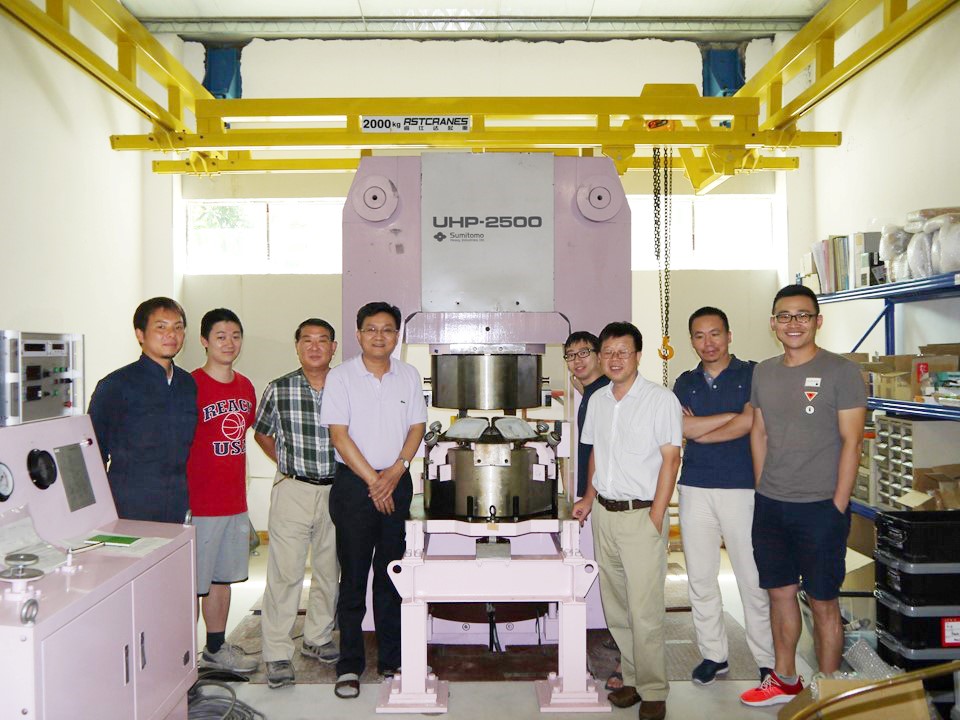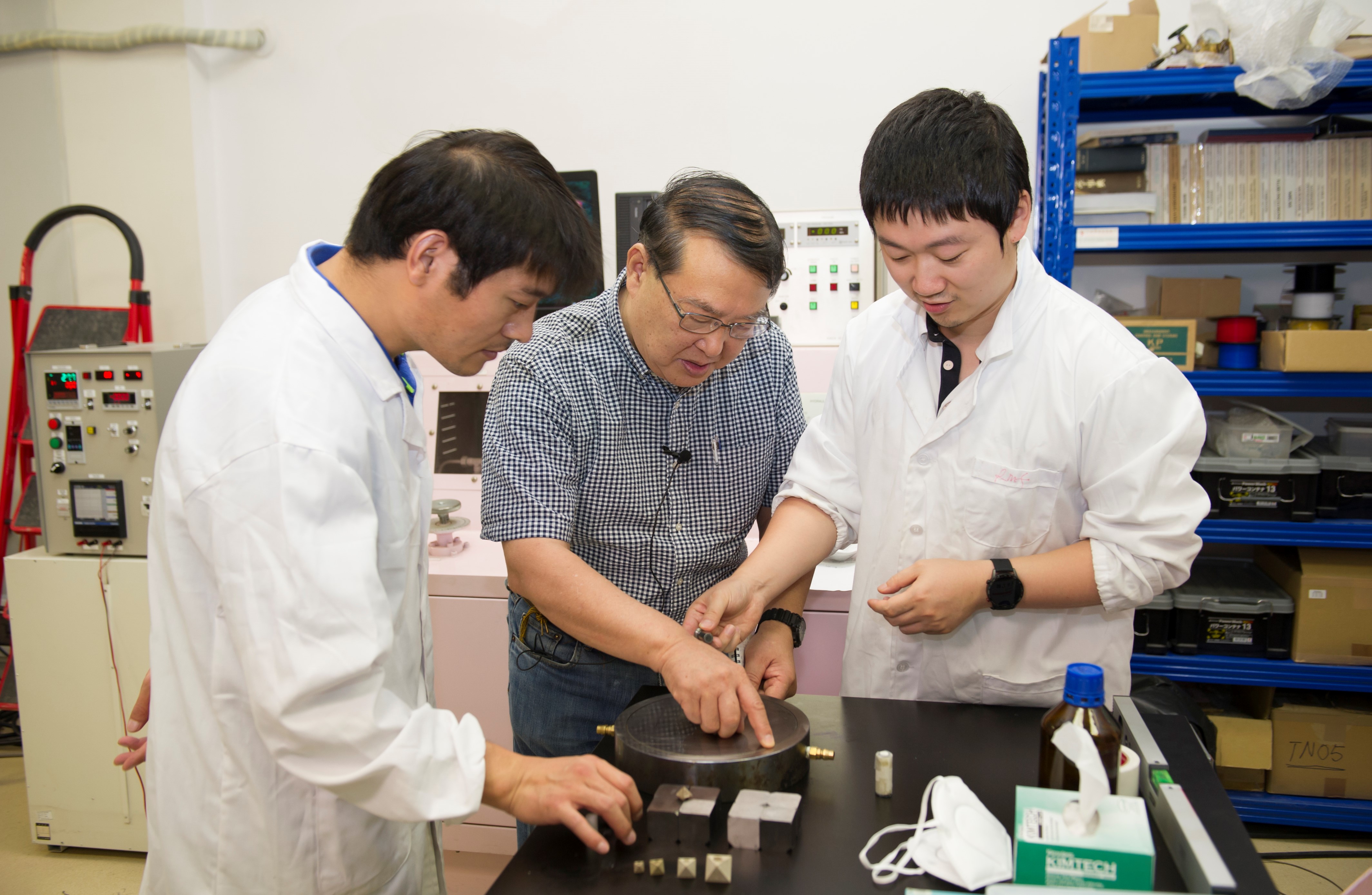
Contributing to Others’ Success, from Japan to China
In 2017, Takahashi, then 65, retired from Tokyo Tech, with which he had nearly 30 years of service, and came to work at GIG with the support from the CAS President’s International Fellowship Initiative (PIFI), which is a funding scheme of CAS that enables foreign professionals at different stages of their career to visit or work at CAS institutes with flexible options of duration, with the aim to further internationalize CAS’ brainpower and solicit the wisdom of scientists globally.
So far PIFI has granted funding to Takahashi for three times in a row, which has helped to ensure the success of his scientific work in China.
So what made him choose to keep himself busy in a foreign land when he could have enjoyed an easy life in his late years? His answer is simple: “Why don’t you if you have a chance to do your hobby?”
In fact, Takahashi’s personal contact with China began more than two decades ago, when he took his first Chinese postdoc WANG Wuyi, who later became Vice President of Research & Development, New York at the Gemological Institute of America (GIA).
At the invitation of WANG, Takahashi traveled to China for the first time in 2000 to visit the China University of Geosciences, Beijing, and the Nanjing University. Takahashi’s second student from China was REN Zhongyuan, who as a PhD student then took part in a Japan-US joint research project on Hawaiian volcanos from deep underwater perspectives and produced fruitful results.
In 2007 Ren returned to China and has worked as a research professor at GIG ever since. Interestingly, the last PhD student of Takahashi was from China too. The high caliber of these Chinese young researchers made a deep impression on him.
During the last few years before retirement, he hosted several scientists and students from GIG who performed experiments in his laboratory and later helped to move the laboratory to China.
What led to Takahashi’s final decision to take up employment with GIG was the invitation from Prof. XU Yigang, CAS Member and former director of the institute. They had been friends even before that as they shared common research interest in magma genesis in mantle plumes and came across each other from time to time at international symposiums. In view of GIG’s pure research environment and high research levels, Takahashi accepted the job offer delightedly.

Takahashi finds a home for his multi-anvil press “Sakura” at GIG (Prof. Yigang Xu, fourth from the left). (Image by GIG)
As one of the frontiers in earth sciences, high-pressure experiment simulation, which Takahashi specializes in, is an important approach to studying deep earth processes, and deep earth research is crucial to understanding how the Earth developed into a habitable planet. Therefore, the study of high-pressure experiments is extremely important to GIG, which is reorganizing its state key laboratories for deep earth research.
As China is still lagging behind in terms of high-pressure experiments, the advent of a top scientist like Takahashi will be far-reaching, not only for GIG’s development in the long run but also for the country’s endeavors to catch up.
Specialized instruments are indispensable to high-pressure experiments. It took Takahashi two years to move almost half of his laboratory in Japan to GIG. All the equipment was donated by Tokyo Tech based on a collaboration agreement with GIG, including a piece of multi-anvil apparatus weighing more than 20 tons with a manufacturing cost of about 7 million Chinese yuan.
When asked what he expects to achieve in China, Takahashi replies, “I am a pretty old person now. So I myself am not eager to achieve my own success. But if I can contribute to other people at GIG or other places in China, I am very happy.”
As he explains, he is now working hard as an engineer at GIG to facilitate his colleagues’ research. He is leading LI Li, an engineer, in improving pressure calibration of the multi-anvil high pressure apparatus, as accuracy of pressure values is vital to high-pressure experiments.
He is also collaborating with professors like XIONG Xiaolin, SONG Maoshuang and LIU Xingcheng on many research projects utilizing the multi-anvil press. In addition, he is working with the postdoc Yuto Sato and Prof. XIA Xiaoping in an effort to set up the first standard system in China for analysis and measurement of water in minerals, so that it can be applied to the study of magma genesis and Earth dynamics, including explaining the mechanism of the big mantle wedge in East Asia as well as the magma genesis of the Emeishan and Hainan basalts.

Takahashi performs routine maintenance of high-pressure apparatus with his colleagues. (Image by GIG)

Takahashi gives guidance to young scientists at GIG. (Image by GIG)
Apart from providing technical assistance to scientists as an engineer, Takahashi would also like to continue working on the issue he has been studying all his life: magma genesis of Hawaiian volcanos. Here his dual role is worth mentioning: he is an engineer that develops and manages instruments, and at the same time a scientist that does research with the help of instruments – taking care of both the technology side and the research side as such is common in Japan’s scientific world, actually a widely accepted practice.
To illustrate this, Takahashi makes a comparison with classical music, of which he is a fan: if a composer can play the piano as brilliantly as Beethoven did, he is more likely to create a great sonata; in a similar vein, if a scientist knows everything about a piece of equipment, he can develop or modify it by himself to enable it to better serve the needs of his own research.
Takahashi has not only brought advanced laboratory apparatus and technology, but also introduced two excellent Japanese scientists, Prof. Akira Tsuchiyama and the postdoc Yuto Sato as mentioned above, to GIG, where they now work full-time.

86-10-68597521 (day)
86-10-68597289 (night)

52 Sanlihe Rd., Xicheng District,
Beijing, China (100864)

